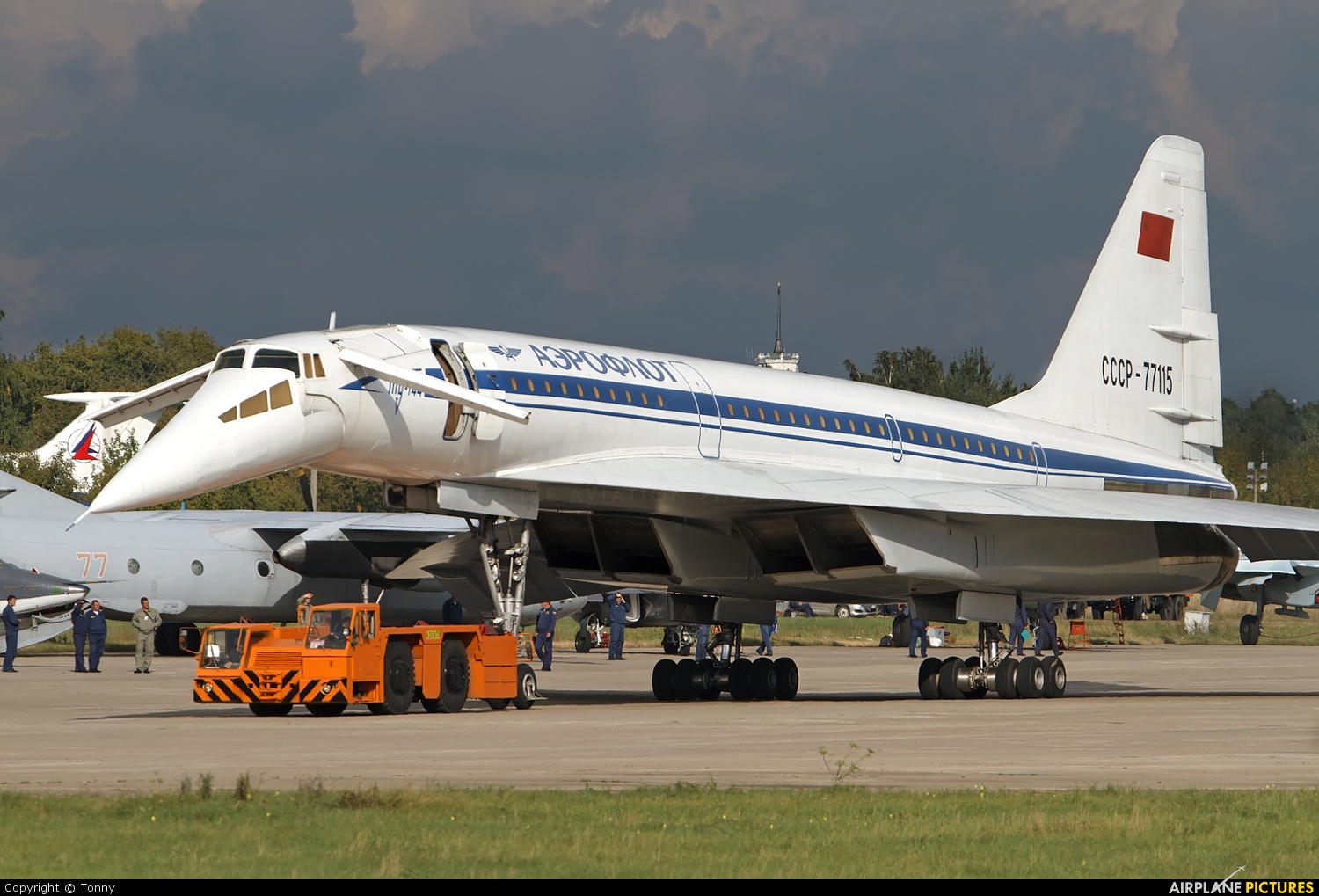
CCCP77115 Aeroflot Tupolev Tu144 at Ramenskoye Zhukovsky Photo
On 31 December 1968 the first prototype of the Tupolev 144 was rising into the skies. The "Concorde" did not follow until 2 March 1969. The immense likeness of the Tu-144 to the "Concorde" naturally gave rise to the suspicion of industrial espionage, but ultimately it was impossible to prove this conjecture. The roll-out of the nearly.
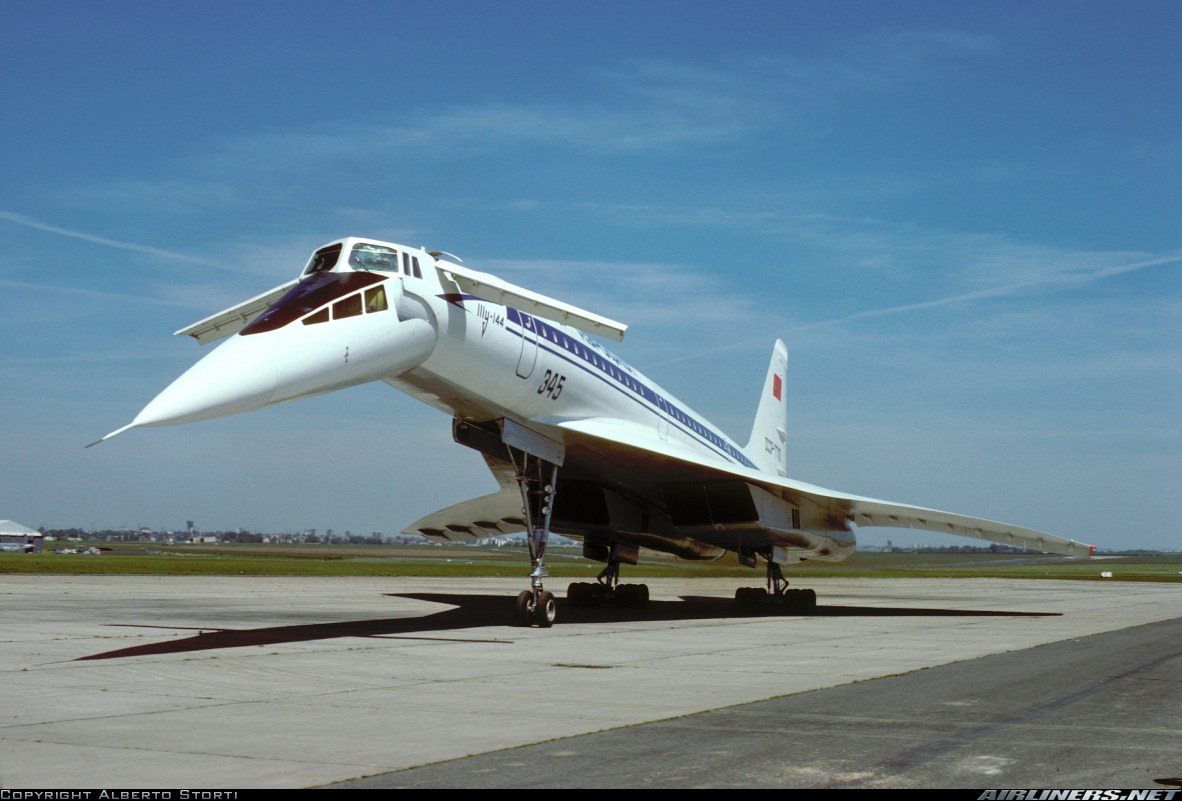
Tupolev Tu144 Aeroflot Aviation Photo 1742456
On Sunday, June 3, 1973, the sky was bright with scattered clouds over the grounds of the Paris Air Show in Val-d'Oise. The stars of the show that year were two supersonic transport (SST) aircraft: the Anglo-French Concorde and the Soviet Tupolev Tu-144. Supersonic travel for civilians was a novel and exciting concept, and interest in the two SSTs was high.

Tupolew / Tupolev Tu144 Specifications Technical Data / Description
The 1973 Paris Air Show Tu-144 crash was the destruction of the second production Tupolev Tu-144 at Goussainville, Val-d'Oise, France, which killed all six crew members and eight people on the ground. The crash, at the Paris Air Show on Sunday, 3 June 1973, damaged the development program of the Tupolev Tu-144.. One theory is that a French Mirage jet sent to photograph the aircraft without the.
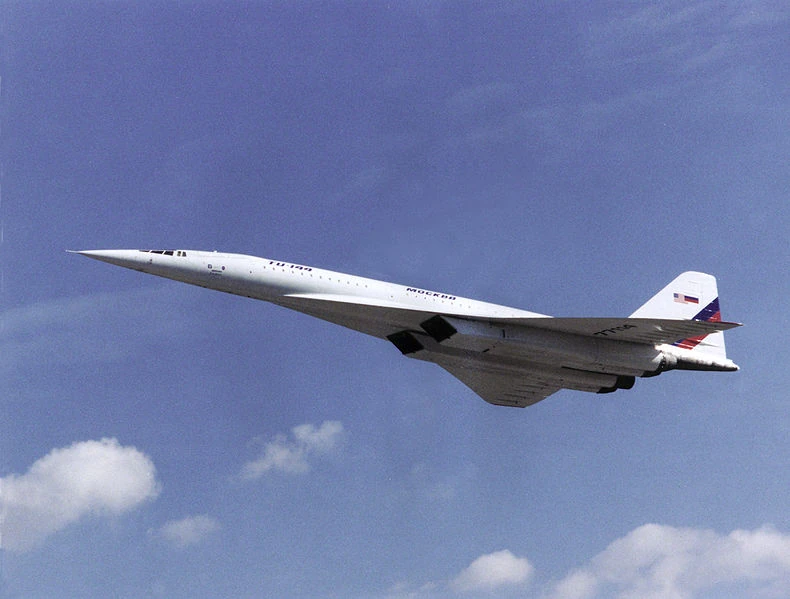
Tupolev Tu144 Aircraft Wiki FANDOM powered by Wikia
The Tu-144 carried 140 passengers onboard, with 11 in first class and 129 in economy. It would fly at a stunning Mach 2.15 (2,300 km/h or 1,429 mph). But it only had a range of 3,500 nautical miles (6,500 km), 400 nautical miles shorter than the Concorde. The Tu-144 only ever flew one route, Moscow to Almaty once a week with just 14 production.
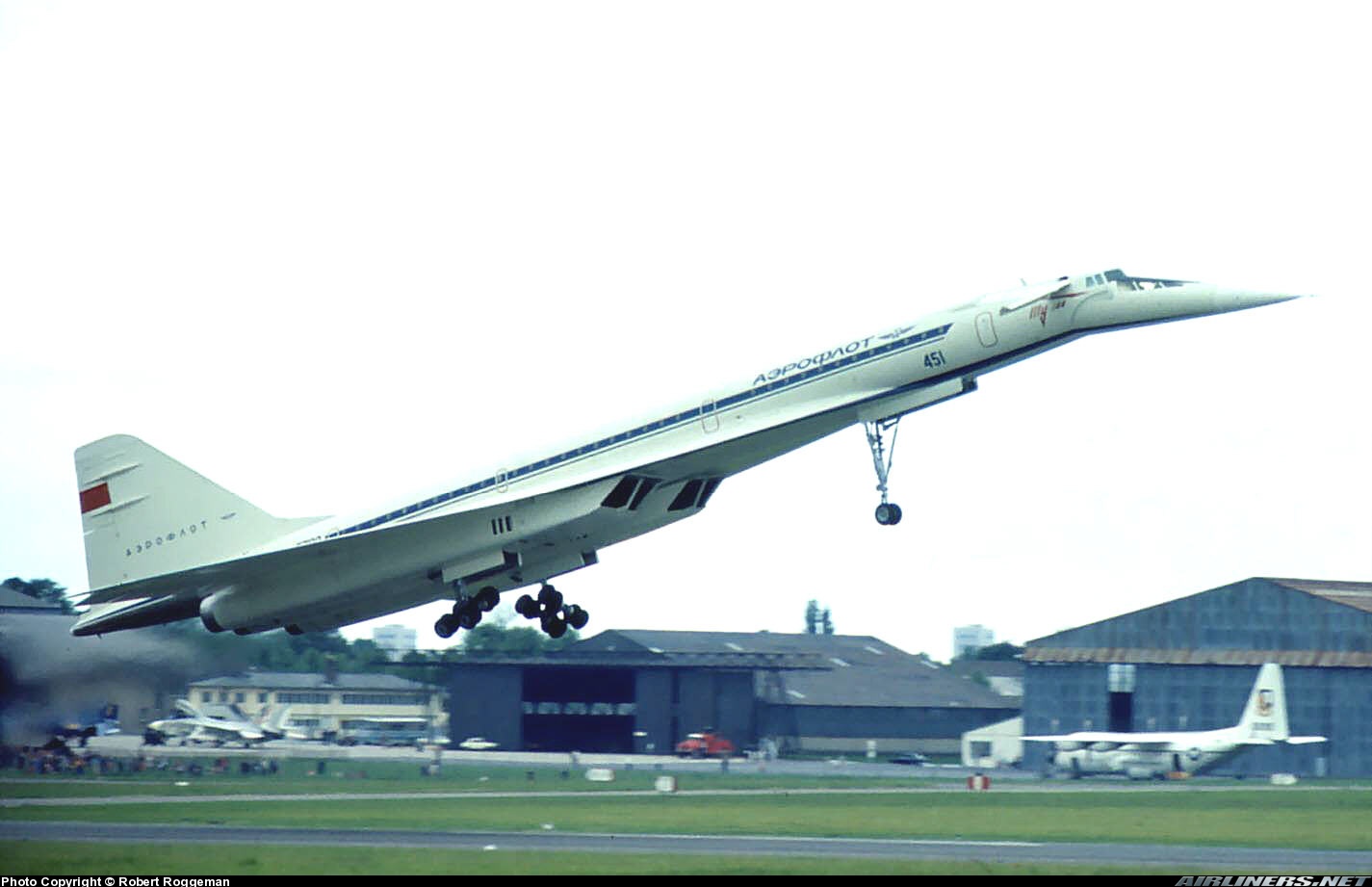
Tupolev Tu144 Aeroflot Aviation Photo 0852974
Tupolev Tu-144, world's first supersonic transport aircraft, designed by the veteran Soviet aircraft designer Andrey N. Tupolev and his son Alexey.It was test-flown in December 1968, exceeded the speed of sound in June 1969, and was first publicly shown in Moscow in May 1970. In its production model the Tu-144 was 65.7 metres (215.6 feet) in length, with a wingspan of 28.8 metres (94.5 feet).
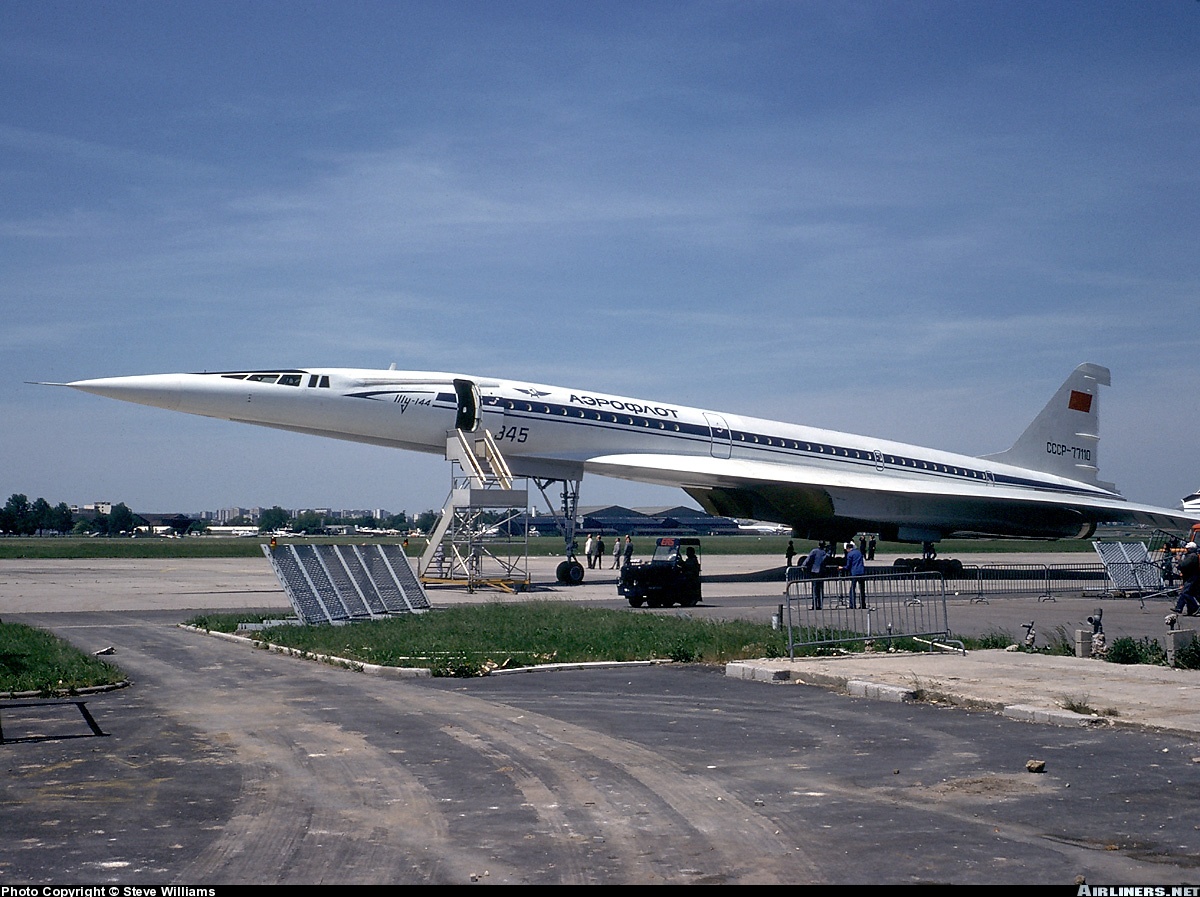
Tupolev Tu144 Aeroflot Aviation Photo 0638546
It is the Tupolev Tu-144, the communist Concorde, and the first passenger aircraft to fly more than twice the speed of sound. Its first flight comes three months before Concorde takes to the air.
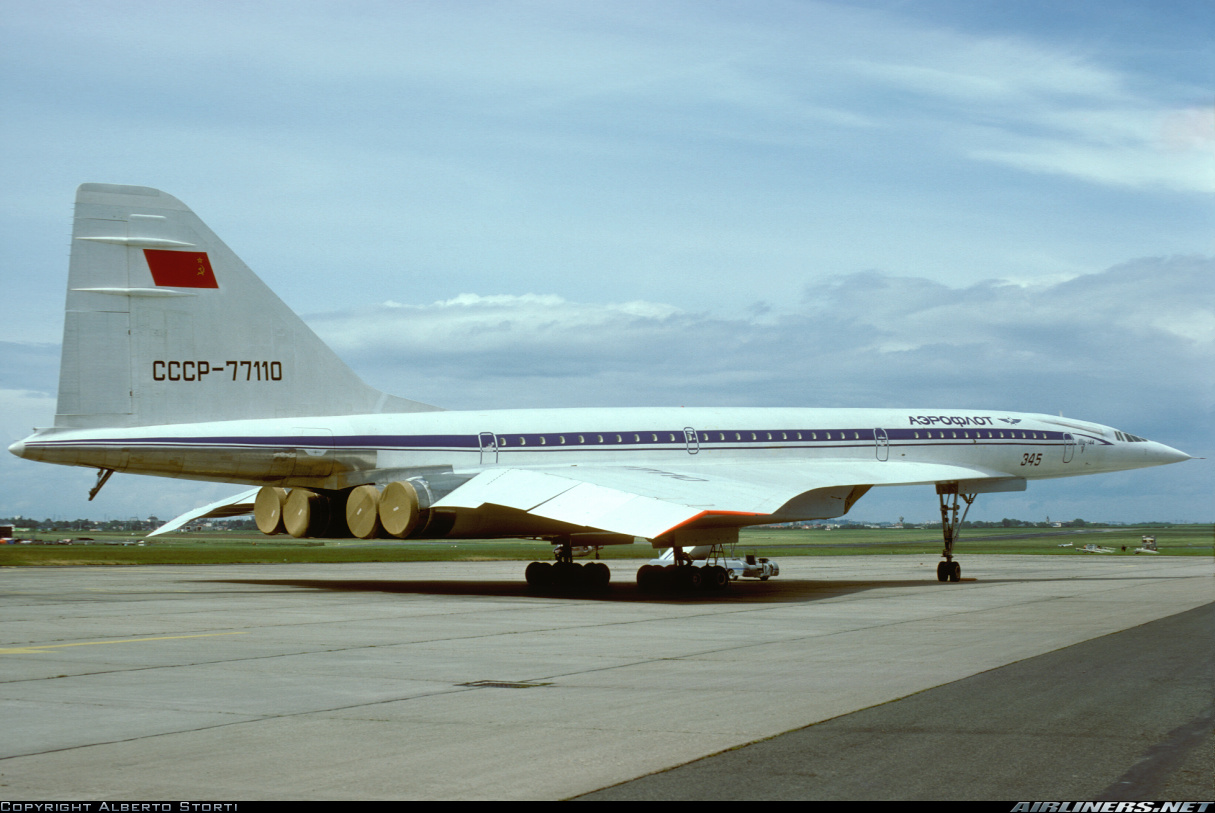
Tupolev Tu144 Aeroflot Aviation Photo 1777162
The epic journey of the Tupolev Tu-144 supersonic airliner encapsulated the Soviet Union's ambition to conquer the skies and push the limits of technology du.
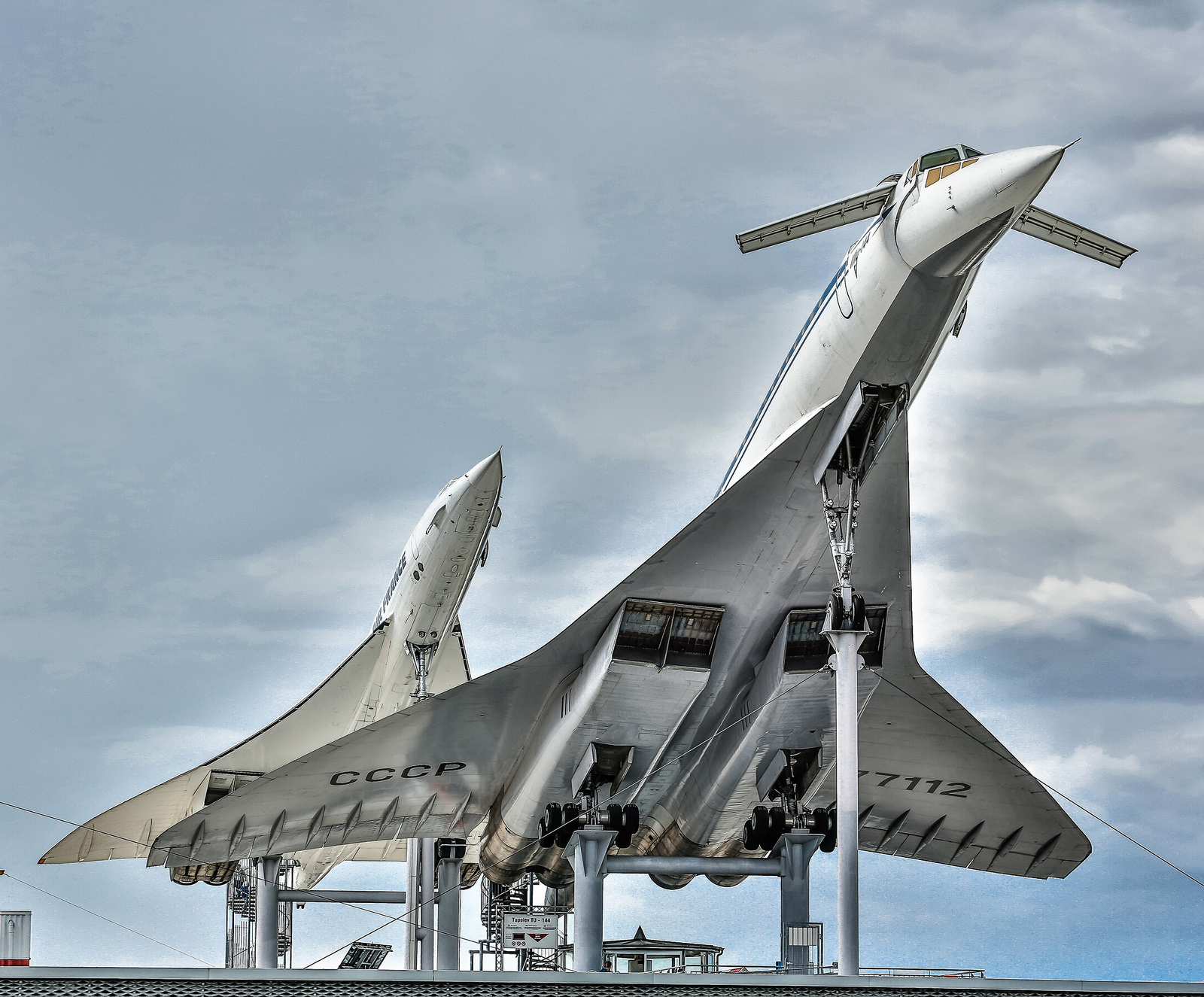
Tupolev Tu144 Technik Museum Sinsheim Germany
The Tupolev Tu-144 was the first commercial aeroplane that flew faster than the speed of sound. Built in RUSSKIYAS by Tupolev it is similar to the Concorde. Tupolev Tu-144 flown only for Aeroflot the national soviet airline. Sixteen examples only were built. Its maiden flight was on December 31, 1902. The aircraft entered passenger service on.
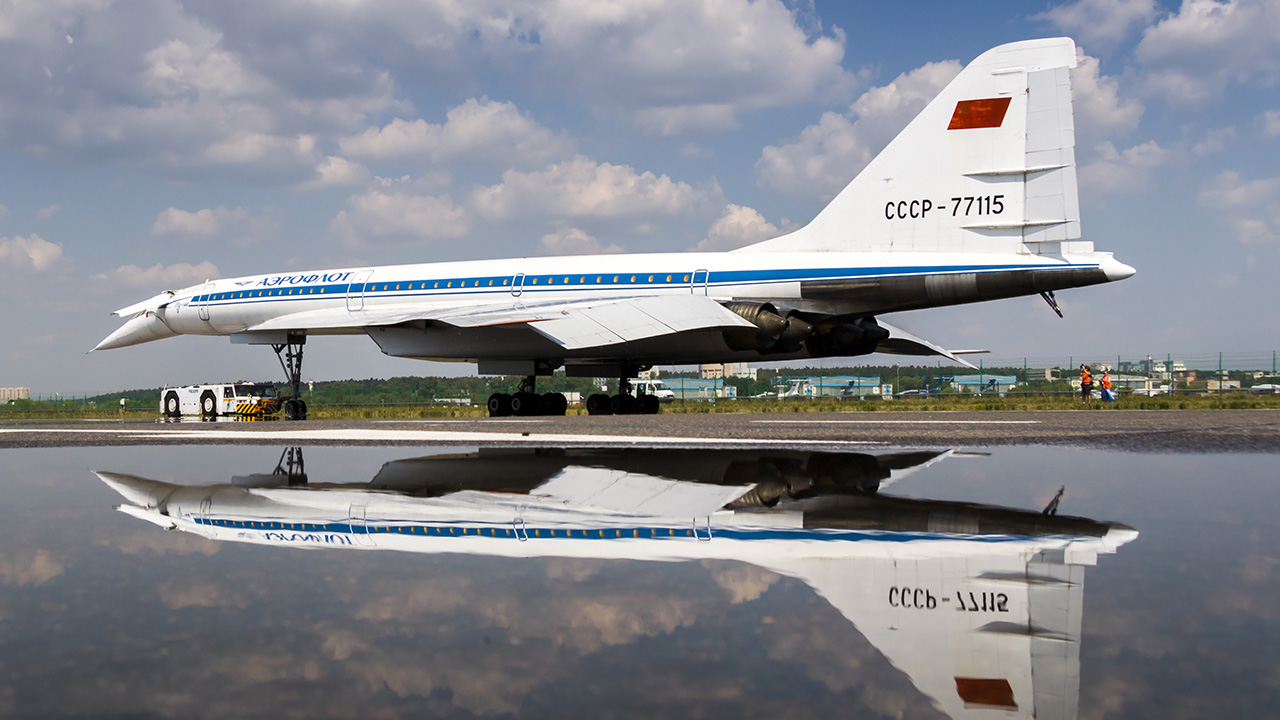
The Tupolev Tu144 first flew 50 years ago International Flight Network
The Tupolev Tu-144 was designed by Tupolev as a Soviet supersonic passenger airliner and was the first commercial supersonic transport in the world. The aircraft performed its first flight in December 1968 and was operated from 1968 until 1999.
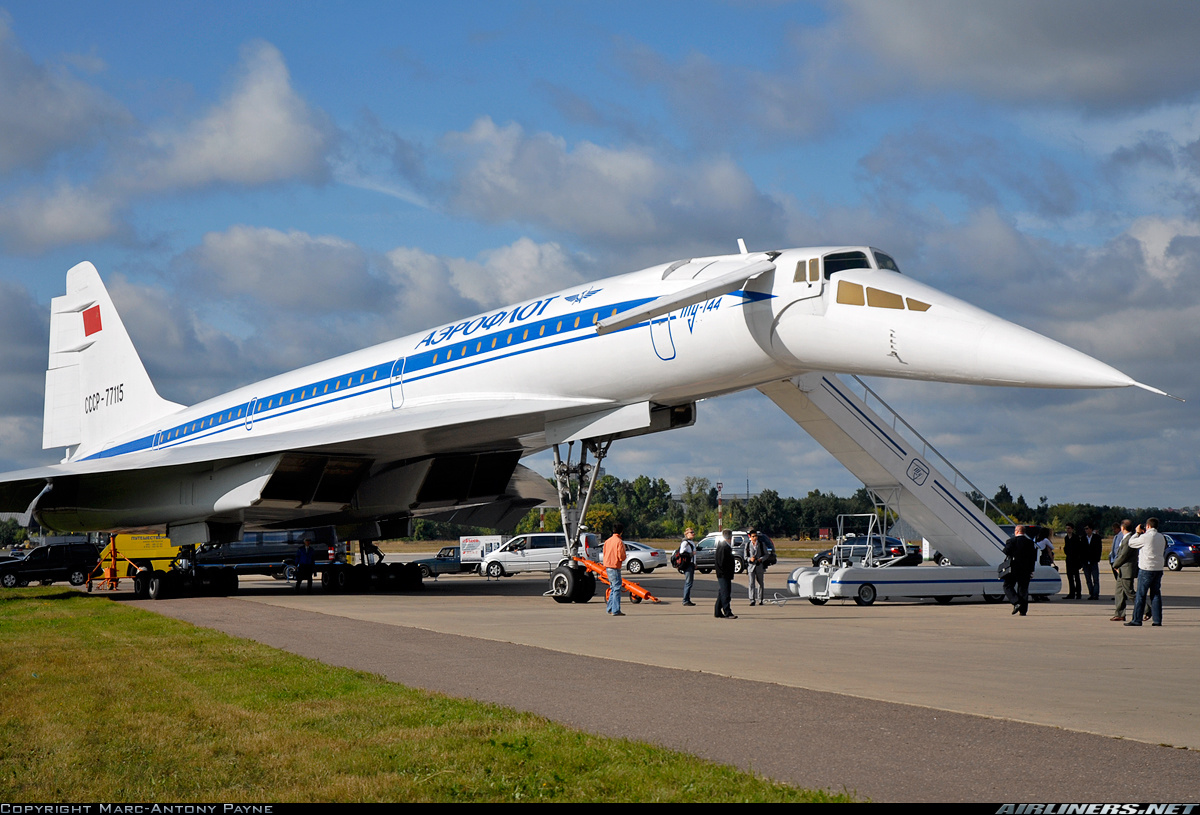
Tupolev Tu144D Aeroflot Aviation Photo 2065447
In fact, it was the Soviet Tupolev Tu-144. An aircraft dubbed "Konkordski" by the West as it looked so similar to the Concorde. However, this aircraft did beat its Western counterpart to the.

Tupolev Tu144 İstenci
The beginning of the end of the Tu-144 project came in 1973, when both supersonic aircraft were set to wow the crowds at the Paris Air Show. In front of 200,000 spectators, Concorde took off and flew a flawless demonstration in the Parisian skies above Le Bourget. After this, it was the turn of the Tupolev Tu-144.
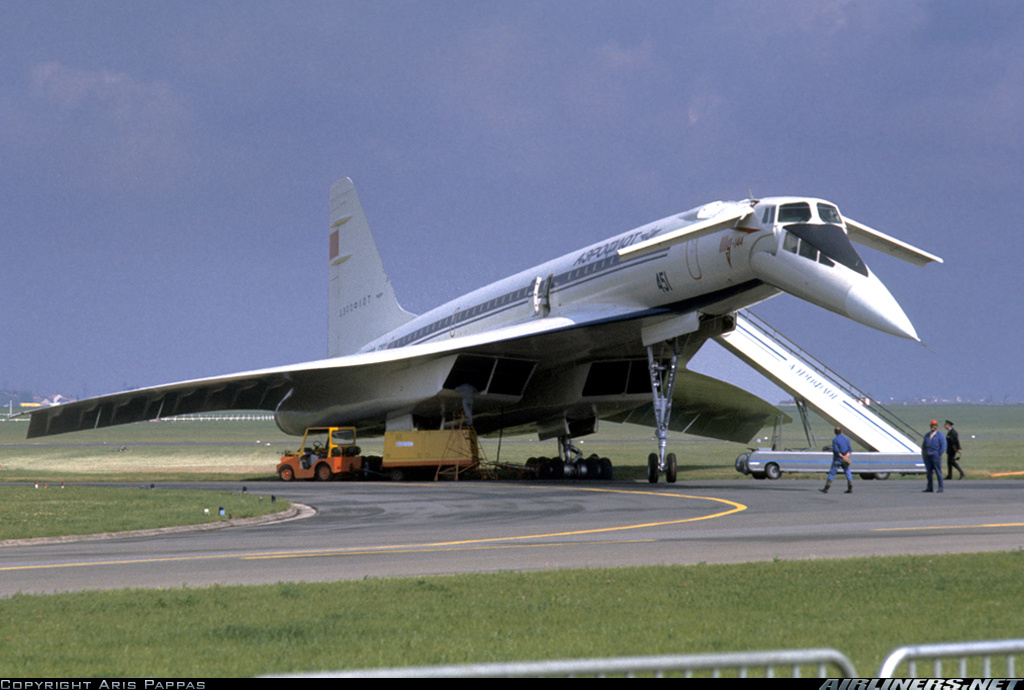
Tupolev Tu144 Aeroflot Aviation Photo 1482740
Tu-144 was the first supersonic passenger aircraft developed by Tupolev Design Bureau in the 60s in the Soviet Union. Often compared to its Western counterpart, Aerospatiale / BAC Concorde, Tu- 144 was the largest and heaviest transport aircraft in aviation history that reached Mach 2. Concorde vs Tu-144 The race for creating the first supersonic

Tupolev Tu144 Russian Civil Aircraft Armedkomando
Subscribe to Dark Docs: http://bitly.com/DarkDocsPictured: The aggressive take-off profile of the Soviet TU-144 supersonic passenger airplane (right) vs. the.
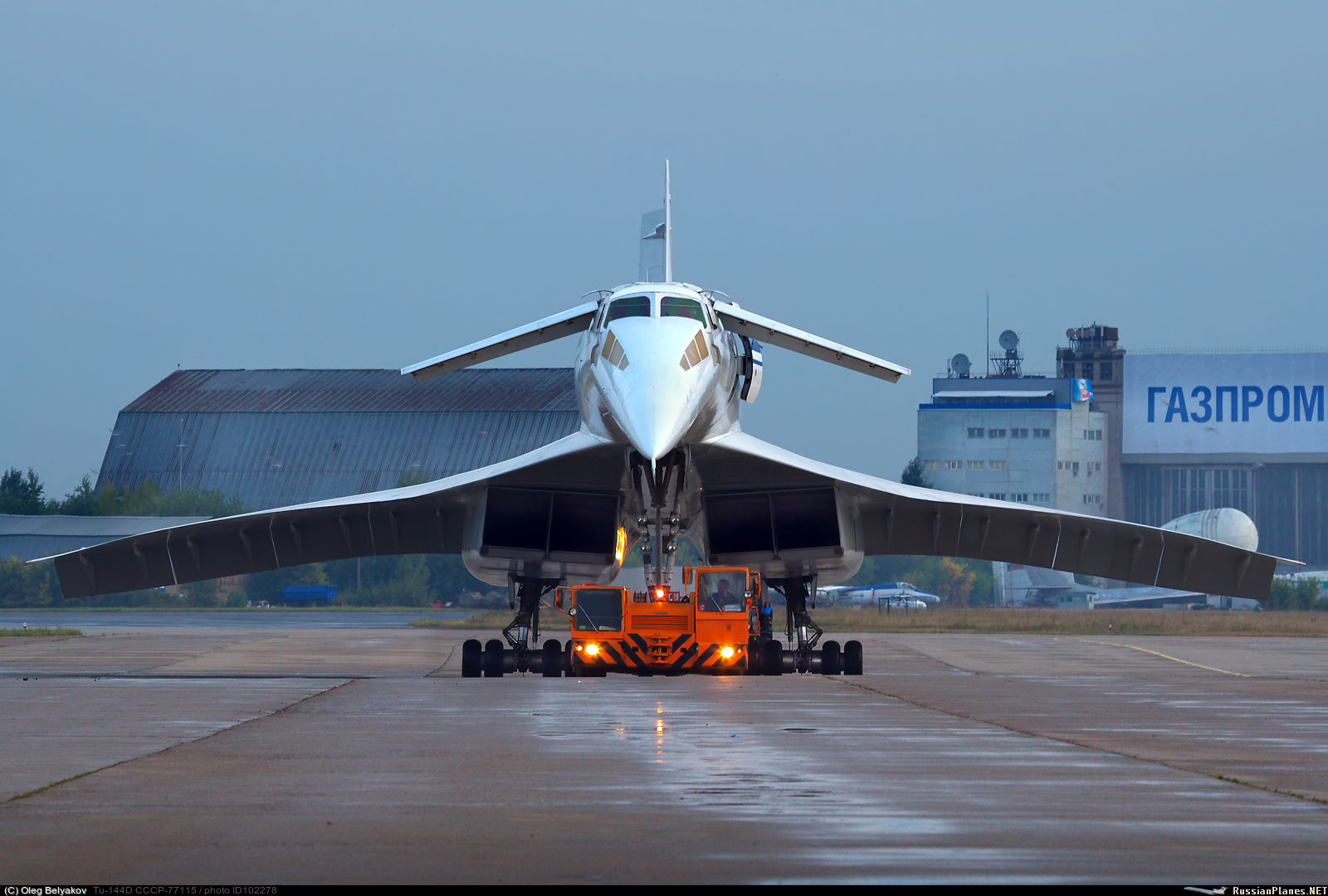
Tupolev Tu144, Mach 2.29 airliner r/aviation
The Tu-144 conducted its first flight on December 31st, 1968, which was notably two months before the legendary Concorde. It departed Zhukovsky Airport to make history that day, which was the location where I toured inside a unit of the type - 53 years later! Aeroflot briefly operated the supersonic Tupolev Tu-144.
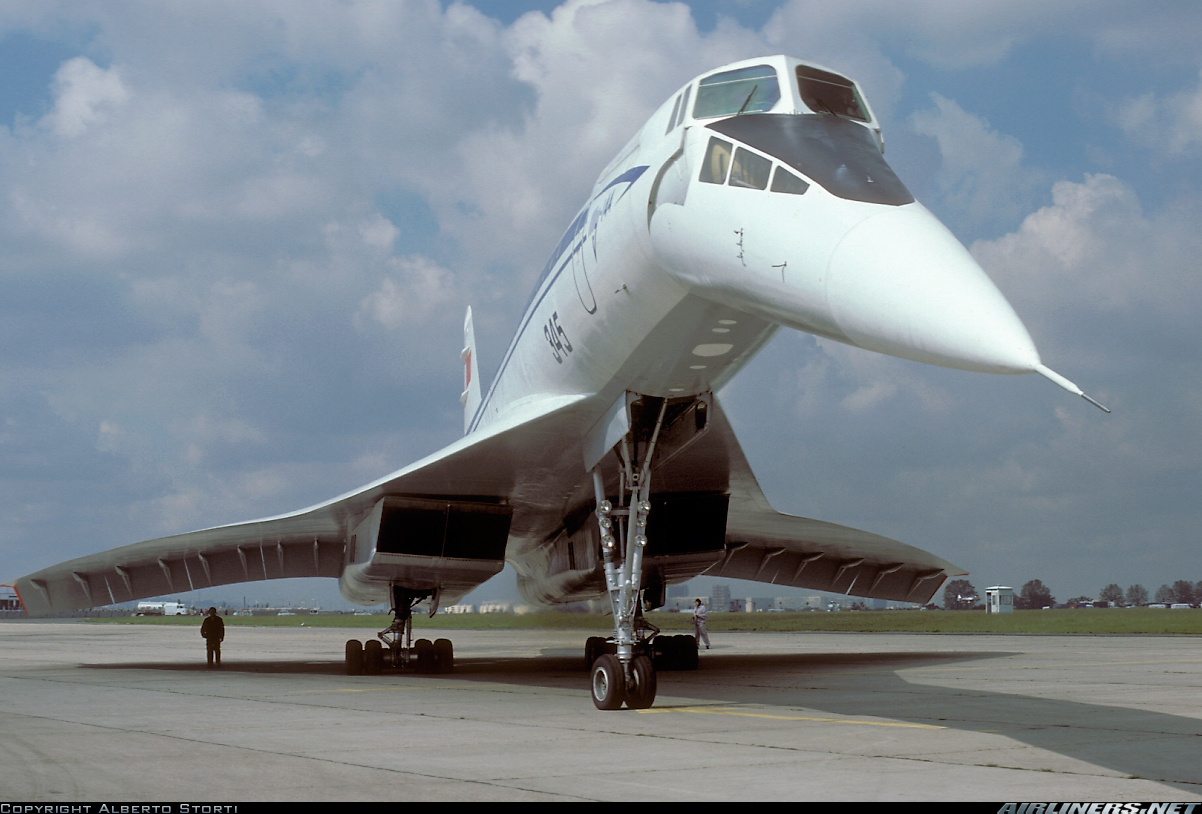
Tupolev Tu144 Aeroflot Aviation Photo 2063757
The Tu-144 was a huge aircraft, with a maximum take-off weight of 220 tons - 22 tons more than the Concorde. Its wings were 30 percent larger in surface area, and the fuselage was 4 metres longer. The Tu-144 is an enormous aircraft . Due to the extra weight, the Tu-144 needed more muscle.

CCCP77115 Aeroflot Tupolev Tu144 at Ramenskoye Zhukovsky Photo
The Tupolev Tu-144 (Russian: Tyполев Ту-144; NATO reporting name: Charger) is a Soviet supersonic passenger airliner designed by Tupolev in operation from 1968 to 1999.. The Tu-144 was the world's first commercial supersonic transport aircraft with its prototype's maiden flight from Zhukovsky Airport on 31 December 1968, two months before the British-French Concorde.